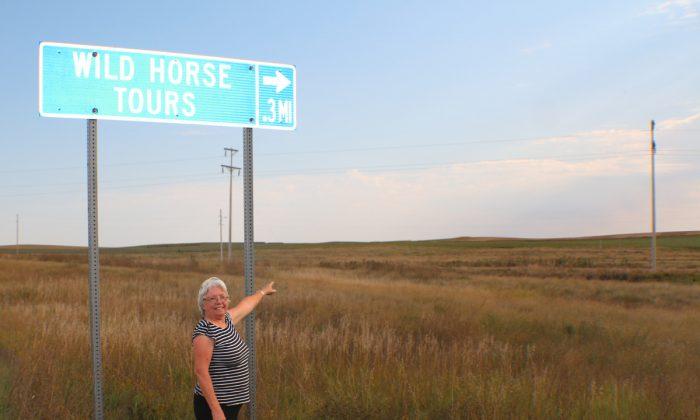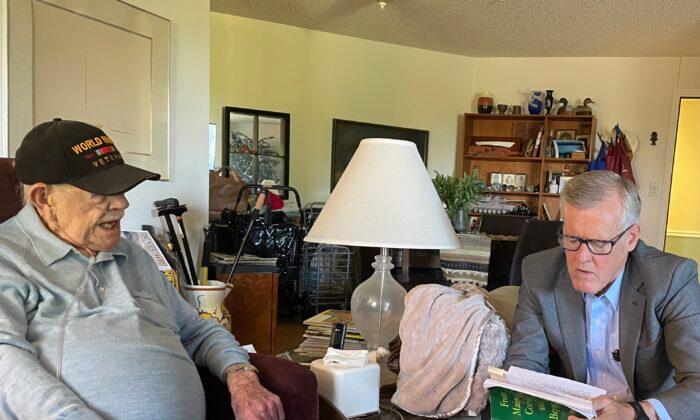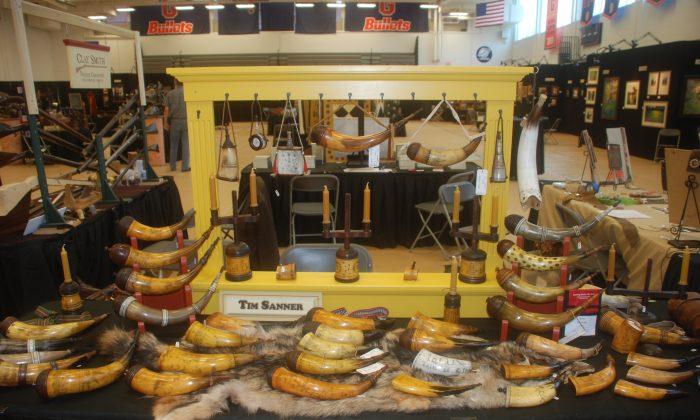American robber barons raped the land and destroyed forests, polluted water resources and turned once pristine rivers into contaminated sewers. They are still doing it. They were vicious criminals then; there are vicious criminals destroying natural resources now. They got away with it through the complicity of corrupt government officials they bribed or put in office. The law meant nothing to them, driven by greed and ambition. Confronting cruel slaughter of wild horses by these same opportunists, a petite polio victim saw blood running out of the back of a truck. She followed it. When it stopped Velma Johnston was shocked at what she saw. One horse had its eyes shot out, babies were trampled on the floor, the frightened cargo was in a deplorable state. Questioning the truck driver this unlikely crusader was told the horses were rounded up on government range and were going to be slaughtered.
Most remember the old denomination for aged horses: ‘heading to the glue factory.’ Indeed horse hooves were processed into glue, their hides used for leather, their bones for fertilizer and their meat for animal food. Some of the meat was sold in Europe in the horse meat trade. Leaner than beef, horse meat was purveyed through butchers in Belgium and France where it was and still is popular.
This isn’t yesterday’s news, something from the 1960s, it is happening today. The battle for public lands continues with more vigor than ever. Public lands managed by the Department of Interior’s Bureau of Land Management as well as federal lands under the jurisdiction of the Park Service, Forest Service, military proving grounds under the auspices and control of the Department of Defense, indeed large Indian reservations operated by tribal governments all have wildlife. Some of that wildlife includes feral horses. That’s the crux of it, the simple word ‘feral.’ It means wild but has the connotation that the animal was once domesticated. There are no ‘domesticated’ animals allowed in national parks.
There were no wild horses in the North American continent until Spanish conquerors brought them in. Horses were native until they died out about 8 to 10,000 years ago. Native Americans were dog people. They had no horses until they obtained them from the Spanish by trade, capturing those that escaped or by theft. The horse transformed primitive cultures. Dogs were used to drag travois limiting their nomadic existence. Western plains people became a horse culture. In a short span of time whites transformed a once vibrant and traditional people into welfare cases prone to drugs and alcohol. The whites embarked on deliberate campaigns to eradicate Native Americans as well as their means of sustenance. Whites killed off the bison and wild horses.
When an expedition was sent out to locate bison in the American West only a few were found. To replenish herds captive bison had to be taken from New York’s Bronx Zoo to restore what had been wiped out. Indians that were not massacred with bullets were murdered when smallpox infected blankets were deliberately given to them by whites. Native peoples were confined on reservations and starved by corrupt Bureau of Indian Affairs agents. Their children were transported to boarding schools and punished if they dared speak their native languages. A new religion was forced upon them. They were cruelly punished for refusing its tenets much as the Aztec, Maya and Inca people were tortured and burned alive by priests of conquest.
What happened to the wild horses? They were shot, rounded up by helicopter, shipped to slaughter plants and removed from public lands. What Velma Johnston saw was typical of the times. She began a campaign to get laws passed that would prevent cruel aerial roundups on public lands. She was called ‘Wild Horse Annie’ in mockery. Velma liked the moniker and adopted it. Instead of mocking her efforts the name became a symbol for one frail woman’s determination to stop cattlemen, oil and gas interests, corrupt government officials and commercial hunters from destroying the last of America’s wild horses.
There was no pride in it. Criminals disguised as pious church goers handed cash to BLM officials to kill horses so they could graze their cattle at rock bottom lease rates. Government officials were all for it. Get rid of wild horses and get rid of a problem. They served no purpose. Cattle made people money then as now. Enter Karen Sussman. Wild Horse Annie’s organization was called the International Society for the Protection of Mustangs and Burros (ISPMB). Legislation was passed first to prevent roundup and shooting of wild horses and burros on public lands from aircraft. Little by little loopholes were closed and legislation expanded to offer more protection to wild horses. Wild Horse Annie died and Karen Sussman, a trauma nurse living in Scottsdale, Arizona, volunteered to help. Eventually she picked up the reins as president of ISPMB and began adopting horses.
Karen saw that powerful cattlemen would soon have sway. Corruption is a way of life in the U.S. The word politician is equated with evil and greed in all of its forms. Like Wild Horse Annie before her Karen Sussman took up the challenge. When herds were threatened with extermination she obtained land in South Dakota and had them transported. Not one or two horses the BLM wanted to get rid of by adoption, Karen adopted whole herds. By taking entire herds she preserved, and now protects, the gene pool was well as the natural behaviors of these wild horses. Karen oversees some 500 horses in four separate and distinct herds on an 800 acre private ranch inside the Cheyenne River Sioux Indian Reservation twelve miles from Eagle Butte, South Dakota.
It is not easy and it is not cheap. “A horse takes up what we need for a cow-and-a-half. That’s about $3,000 at today’s prices,” a cattle rancher said..
It is no wonder corporate ranchers see wild horses as a dent in their income and want public land for their cattle. The argument is that wild horses use water, a precious western commodity. Cattlemen argue that horses eat grass that otherwise should be for cows. Hunters argue that they want the land for elk and deer. Oil and Gas interests just find wild horses annoying and profiteers still want to slaughter them for European meat purveyors.
Like anything else in the world today it is quite likely that the only place wild creatures will find peace is on private reserves, sanctuaries and conservancies. Even with sanctuary and park protection elephants are being slaughtered for their parts. Stupid politicians in America decided they could stop poaching and ivory trafficking with the complicity of corrupt African government officials and their henchmen by making the sale of antique ivory illegal in the U.S.
These same folks insist on being politically correct and impede birth control education in Africa as part of U.S. aid projects. Likely the religious lobby of various sorts thinks it better to have more people on diminishing land resources. Poverty results in poaching. Since money changes hands, big money for elephant ivory, rhino horns and other animal parts for the Asian marketplace, incipient American politicians go blithely along thinking they are doing something. Another big ‘out’ is to give federal authority over some aspect of government back to states. States have lobbyists that are even more powerful. The special interest lobby has persuasion; they contribute big bucks to political campaigns. In the end the few wild horses left will be gone off public lands.
They are already gone for all intents and purposes. Statistics reveal that there are only 24,000 to 37,000 left in the wild depending on who is counting. A lot less if horse protection groups are listened to. Over many years the BLM rounded them up and slaughtered them or put them in holding pens. This is the great American rip off. BLM has demanded $80 million a year of taxpayer money to feed these horses in their holding pens. In the wild they were well able to feed themselves and didn’t languish in confinement.
BLM hopes to adopt these horses out. Sometimes it works. Kids get their parents to pay $125 to adopt a mustang. Kids like lively colors. The BLM catered to that. If green was the color of the day then they sent out killers that shot wild stallions and they stuck green stallions out with the wild mares. Voila, green horses or paint horses or any color that gets kiddies to adopt them. The BLM has so altered the gene pool, as have ranchers that just let their unwanted nags go onto public lands, that it is hard to say that some of these feral horses are important and distinct breeds. Some wild herds are distinct.
Karen has saved them. ISPMB gets no government money. Donors that believe in the cause send what they can. One donor wrote a beautiful card sent in with her donation. Eve Andrade wrote Karen, “Our wild horses need to be honored as our mentor/role models of the qualities of character we as Americans admire and aspire to. Not just for Americans, our horses are symbols of freedom. Historically in service building this country.” One citizen’s thoughts that echo many. ‘Our wild horses.’ That is the key to it all. A person living in a large urban area may never get to the western states where horses run free. Those horses belong to the urbanite as they do to the cowman that wants to rid them from public lands.
“We’re still here. That’s good,” Karen Sussman said. Every day is a struggle. The ranch is too small to support 500 horses on grass. They are kept in four separate areas in their own herds. The herds are free to roam pastures and ranges. They are fenced to keep them off surrounding private land and keep the herds separated. The herds have to be fed every day. That means Karen must raise about $250,000 every year just to pay hay and feed bills. That ain’t hay, especially when there is no government money coming in and the entire organization depends on private donations.
The routine argument that government authorities as well as ranchers use is: “If you don’t cull them and control them these wild herds will double every year.” Some modify that exaggeration by saying the herds double every four years. Truth is Karen’s studies prove them wrong. Wrong in many ways. Yes, horses rounded up every year and separated, sorted and interfered with no longer have the family structures wild horses, herd animals, should have. Young stallions will breed any mare any time. This does not happen in wild herds governed by a band stallion that protects his mares.
“Our studies show that the more you leave these animals alone, they have stable harems, therefore stable population growth. I have 15 years monitoring herds, watching what takes place. Horses in the wild have social structures. They live tougher in harmony. It’s good that we talk about the Catnips right now. They are going to be gone in the wild. They are going to be wiped out.” Karen received news that the U.S. Fish and Wildlife Service that controls the Sheldon Wildlife Range in Nevada were going to round up the last of the Catnips. They get the name from Sheldon’s mountains.
“They date back to 1800. They were U.S. cavalry remounts and their descendants. They inhabited that range all that time until the Fish and Wildlife Service decided they wanted antelope. The horses were always there. By law they are not required to preserve or protect wild horses. Their ultimate goal is to eradicate wild horses on the range. In 2004 when they were going to zero the Catnips out we took 82 from the Catnip Mountains. We already had two herds…” Karen sighed.
The Catnips are beautiful horses by any standards. Many are paints, some with blue eyes, fine looking horses. They didn’t behave like the two other herds. Karen took those two herds all together. Those horses, the Gila Spanish mustangs and the White Sands herd, had not been interfered with in fifty years or more. They had been gathered for transport, each herd separately and at different times, and trucked to ISPMB in South Dakota. These two herds were released on separate range land where they remain in their family bands.
“If it weren’t for the Catnips we would have thought that all wild horses behaved like our two herds. Their social structure and breeding is different. The Catnips is what happens when continual roundups over time destroy families. We observed dysfunctional behavior. In the first year the Catnips were here there was a 31% population growth. That’s very high. The second year it was the same. We studied them and noted they behaved differently than our functional herds. Out of 179 BLM herds they may only have two healthy behavioral herds. Those are the Cerbats in Arizona and their Montgomery Pass herd in California. It took years for people to realize what is going on.”
Karen was adamant. She was tired of dealing with government bureaucrats that falsified information to support bad biology in order to lie to the U.S. Congress or cover up their mistakes.
What Karen discovered was that the dysfunctional Catnips only had young stallions. Only the young ones were allowed to live. Youngsters were mating year old mares. There was no mentoring. No aunts to help a mother protect and care for her foal. Young mothers were abandoning their foals at birth. Stallions were too young to perform band stallion duties.
“We are a conservancy. It has been a treasure to be able to observe the Catnip herd and recognize the difference. These observations may make it possible to save horses on public lands. Government officials have to understand management. Our goal is to help the BLM create a model for managing wild horses in our country, a plan that preserves and protects them.” Karen’s long and detailed letter describing behavioral information to the BLM did not even receive the courtesy of a reply.
What Karen explained next was revealing and attitudinal, “Currently BLM manages wild horses like livestock when really they are wildlife with strong social bands. They must be managed accordingly preserving family bonds. Because the BLM does not understand them as wildlife species their management scheme has increased fertility rates by massive disruption of their families. BLM policies have caused the exact opposite of what they were trying to do. The wild horse laws state that management is supposed to be the minimal feasible. By their mismanagement they have caused their own problems by not understanding the horse as a wildlife species and not livestock. Wild horses are different than domestic horses. Wild horses exhibit the true nature of the horse. These behaviors are not seen in domestic horse life. Once the wild horse is gone they will be gone forever,” Karen lamented.
“Our program is critical. We have three herds out of four that will exist nowhere else. They have been wiped out except here. Domestic horses do not live in social settings. They are treated like livestock and are definitely different. This is so important to understand now since the Sheldon herd is being wiped out. They will adopt them out if they can and the fear is that some may go to slaughter.”
What will be the fate of wild horses on America’s public lands? There have been continual assaults by western politicians in the U.S. Senate and House of Representatives on laws that have been established to protect them. Behind these assaults are cattlemen, hunters and greedy special interest groups that want public land for their own profit. If a cow-and-a-half are worth $3,000 and a horse is worth nothing there is soon to be an apocalypse for the horse.
“People have changed. It is not the way it was. People gave their word and kept it,” Dave Reynolds said. Dave keeps herds of rare Spanish mustangs on his land outside Custer, South Dakota. He has witnessed the transition from ranchers working their cattle from horseback to the widespread use of four-wheelers. Forebodings for even the domestic horse in ranch life in the West. Worse for the few wild horses left. The good news is that kind hearted people respond to Karen’s appeal to help her save the herds ISPMB have sheltered from oblivion.
“We paid for the load of hay today and are out of money,” Karen’s last email declared. This 69 year old grandmother of five works every day, in good weather and bad. In blizzard and summer drought she is vigilant to insure the herds have hay and water. She drives the one tractor ISPMB owns and frets when it breaks down having to raise donation money to get it fixed. The tractor is the lifeline in this rural place.
Karen takes no salary and uses her own money when funds are low. She still works long nursing shifts at a local hospital to survive. Foals that have lost their mothers must be cared for around the clock. They must be given artificial mare’s milk every two hours. Karen takes them into her home and lays on a cot so she can get up every time feeding is necessary, nursing them. The sick and elderly must be cared for as well. Perhaps in today’s mail kids will send their dollars. Aging horse lovers in nursing homes will enclose what they can; maybe even a foundation will respond to help this vital conservation effort. It may be the wild mustangs last hope.
For more information about Karen Sussman and the work of their non-profit organization visit www.ispmb.org.






Friends Read Free